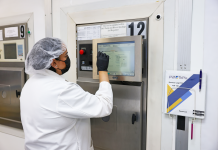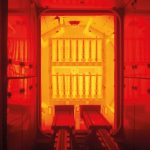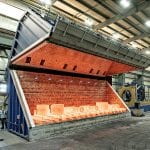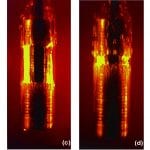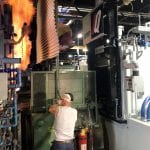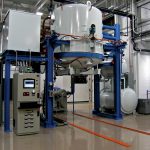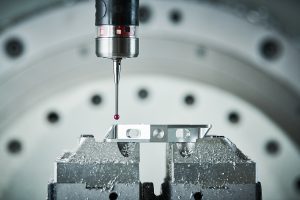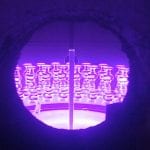The harsh economic climate of 2020 had a direct impact upon ferrous and non-ferrous metal producers, as well as those companies involved in the post production processes of these metals. The demand had fallen sharply in almost all markets worldwide. However, as we move forward into 2021, the signs are encouraging for both sectors as confidence returns and demand starts to expand once again.
Those companies who deal realistically with the current situation, and plan ahead, will be best positioned to be lean and competitive in the future. Firms will be looking to succeed in what has become even more competitive markets by seeking new business opportunities while working more efficiently and reducing costs.
High-temperature insulation solutions are still a much-needed product in the heat-treat industry. All of the main industrial sectors benefit from their use. To that end, Unifrax, a world leader in high-temperature insulation products, has developed a lightweight, thermally efficient lining solution for furnaces traditionally used in steel production.

Breakthrough in alumina-silicate insulation
Since the 1960s, Fiberfrax Durablanket insulation products have been known for their performance, versatility, and handling, forming the basis of energy-efficient lining systems for heat-treatment furnaces where high-temperature applications place extraordinary demands on insulating components. The reduction of fuel usage combined with extended service life of the furnace lining solutions engineered by Unifrax has seen end users benefit from lower-operating and product costs, as well as improved output and enhanced metal quality.
Now, using advances in manufacturing innovation learned from the development of the company’s market-leading Insulfrax® range, Unifrax’s Durablanket product line is produced with the aid of proprietary technology adapted from a spinning based fiberization process for AES (alkaline earth silicate) wool. Durablanket LT and LT Z is a breakthrough RCF (refractory ceramic fiber) product that delivers outstanding thermal performance for temperatures up to 2,450°F.
This new production technology also means Durablanket LT and LT Z offers improved handling for safer, quicker, and easier installation, as well as increased durability and tensile strength that allows it to perform for longer, even in the most extreme operating environments.
As a result, it is suited for a wide range of applications, including:
- Billet slab/reheat furnaces.
- Heat-treatment furnace linings.
- Furnace door linings and seals.
- Boiler insulations.
- Pipe and duct insulation.
- Chemical process heaters.
- High-temperature seals and gaskets.
- Strength that’s easier to handle
The proprietary manufacturing process used by Unifrax for the production of Durablanket LT and Durablanket LT Z results in a blanket with a higher index of interlocking fibers and a reduced shot content that makes it easier to form and handle while providing class-leading tensile strength. This high tensile strength — 80 kPa for Durablanket LT — means Durablanket LT is harder to pull apart, making it more robust during installation and much more resistant to stress due to the expansion of casings and components under extreme heat. (See Figure 1)
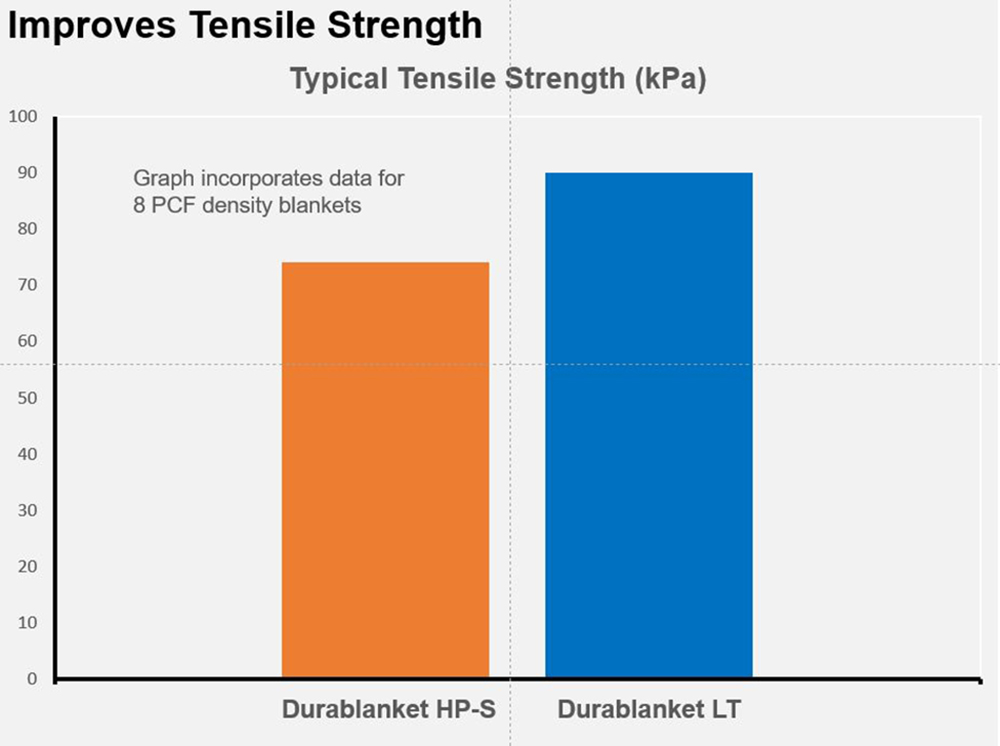
Increased Thermal Performance
Having 20 percent lower thermal conductivity compared to the next best available RCF blanket material means real energy savings in all applications within the ferrous, non-ferrous metals in particular, as well as the power industry. It also translates into payback periods within just several months of service.
In addition to energy savings, Durablanket LT’s low thermal conductivity performance can be leveraged through a reduction in blanket weight and/or thickness, creating more available space in furnaces and ovens. For example, at 96 kg/m3, Durablanket LT provides the same insulation performance as a standard 128 kg/m3 blanket product, which can result in a weight saving of up to 25 percent. (See Figure 2)
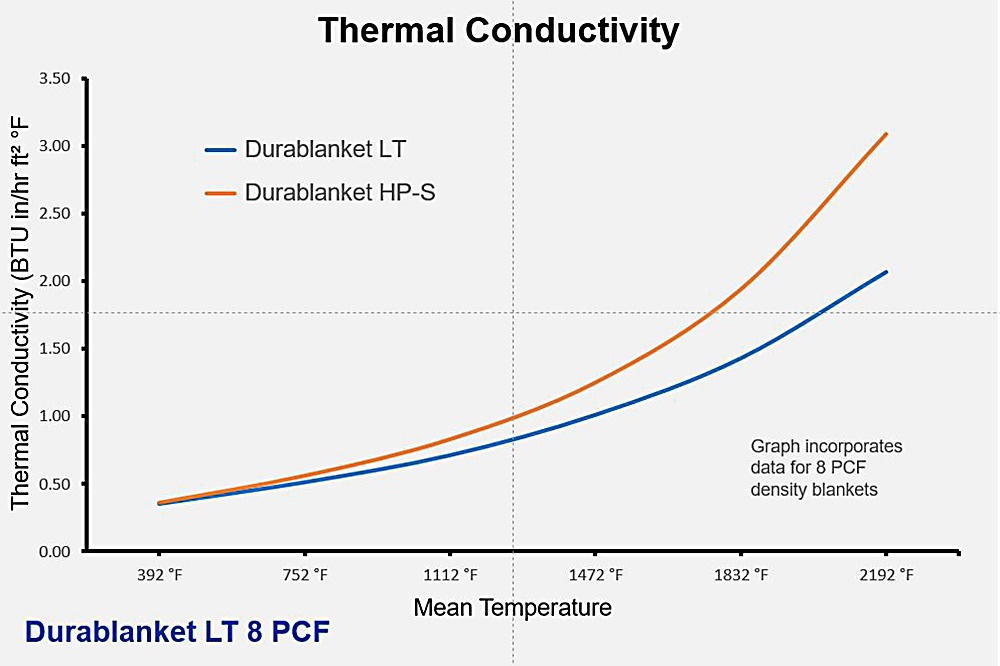
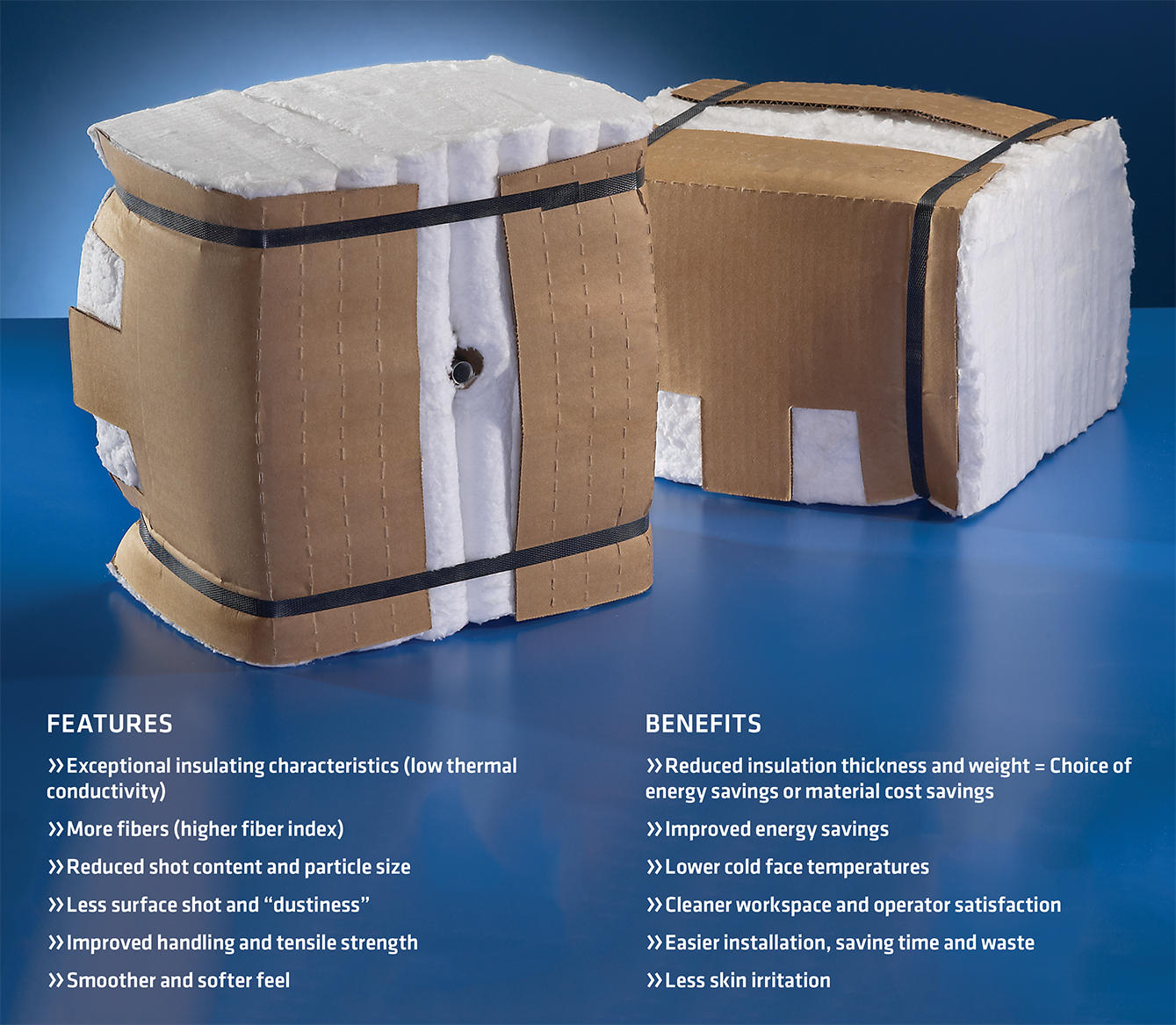
Energy Savings and Sustainability
One of the key challenges customers face is rising worldwide energy prices. Across industries of every kind, customers are looking to reduce their energy consumption as much as they can. Added to this, the demands on these same industries to reduce emissions in line with local regulations and international agreements make Durablanket LT and LT Z a natural choice when it comes to increasing thermal efficiency, reducing costs, and honoring CSR (corporate social responsibility) commitments to achieve sustainability. Durablanket LT and LT Z can reduce energy costs by 15 to 20 percent on average. (See Figure 3)
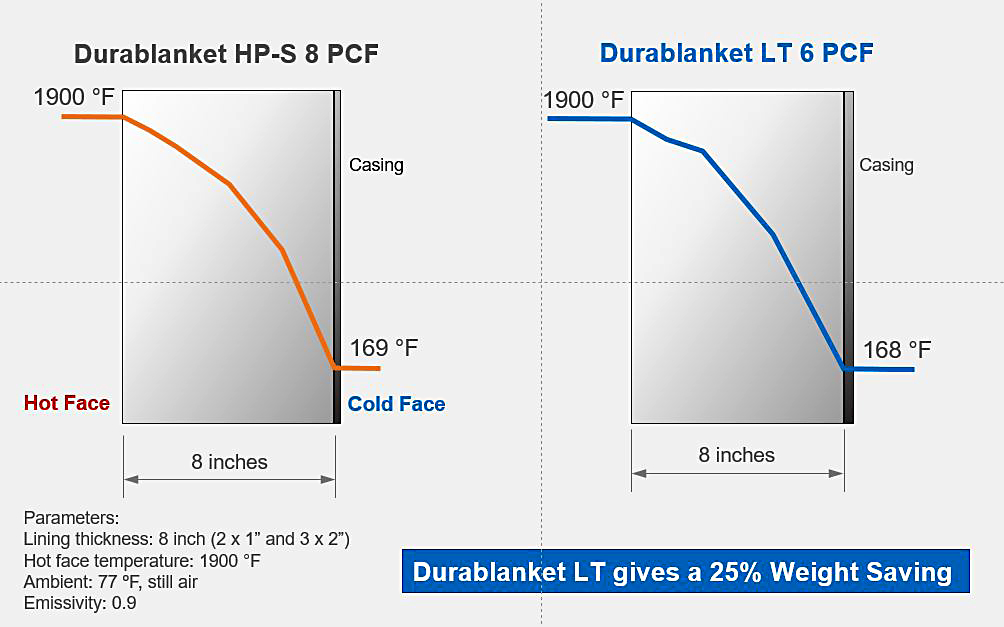
More Fiber
Durablanket LT has a high fiber index — higher than the standard RCF blanket. Unlike fiber, shot (un-fiberized particulate), a by-product of the fiber-manufacturing process, is not an efficient blocker of thermal radiation. The fiber properties of Durablanket LT have been optimized to minimize the shot content and reduce the size of shot. The result is superior thermal performance. This is also enhanced by producing a blanket with a softer feel and improved handling. (See Figure 4)
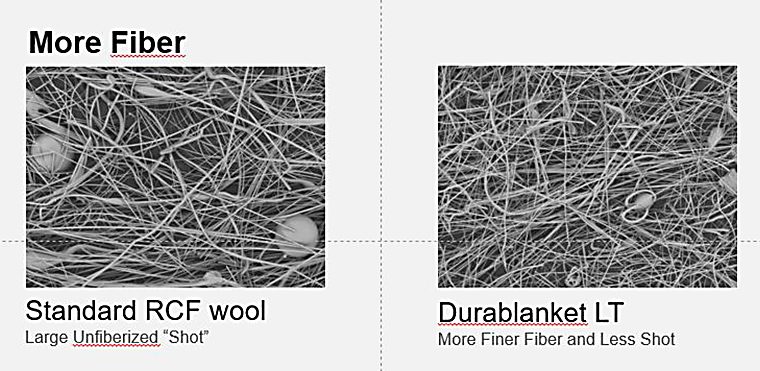
Longer Lifetime
About 30 percent more fiber per unit mass and fewer large shot particles allow the remaining small shot to be “locked away” from the surface, resulting in minimal free particles in the fiber matrix. Fiberfrax Durablanket LT and LT Z blankets provide a longer lifetime in high-vibration/high-temperature environments.
Blanket and Module Formats
Durablanket LT and LT Z are available as a needled blanket product, or as Anchor-Loc® modules. These insulation modules combine fast installation with a robust, thermally efficient, lining solution for high-temperature furnace applications. In either format, it is easy to work with. Little dust is given off during installation, and thanks to its smoother, softer surface, there is less likelihood of skin irritation.
Ferrous/non-ferrous applications
Durablanket products have been used successfully for decades in applications for ferrous and non-ferrous metals, power generation, and other industries worldwide. Now, Durablanket LT and LT Z deliver even better thermal performance and an even longer service life.
Unifrax has one of the broadest ranges of in-house manufactured, high-temperature insulation wool found worldwide and is committed to maintaining the long Durablanket legacy of quality and performance.
The Unifrax product portfolio encompasses traditional ceramic fiber (RCF), to low bio-persistent (LBP) products and non-classified polycrystalline materials (PCW) classified at 2,912°F. Unifrax recently added Insulfrax 1300 HT to the Insulfrax family of calcium magnesium silicate products. This provides end users additional material choices spanning the entire classification and use-temperature range required across several major industrial sectors including the production, processing, and finishing of ferrous and non-ferrous metals.
About the author
Allan Davies is a Unifrax product manager. Unifrax is a global leader in high-performance specialty products used by many industries in a diverse group of applications. Its products provide substantial improvement in thermal performance, save thousands of dollars in energy costs, and can help reduce the operations environmental footprint. Unifrax is committed to producing high-quality products that help its customers save energy, reduce pollution and improve fire safety. For more information, go to www.unifrax.com or email info@unifrax.com.










